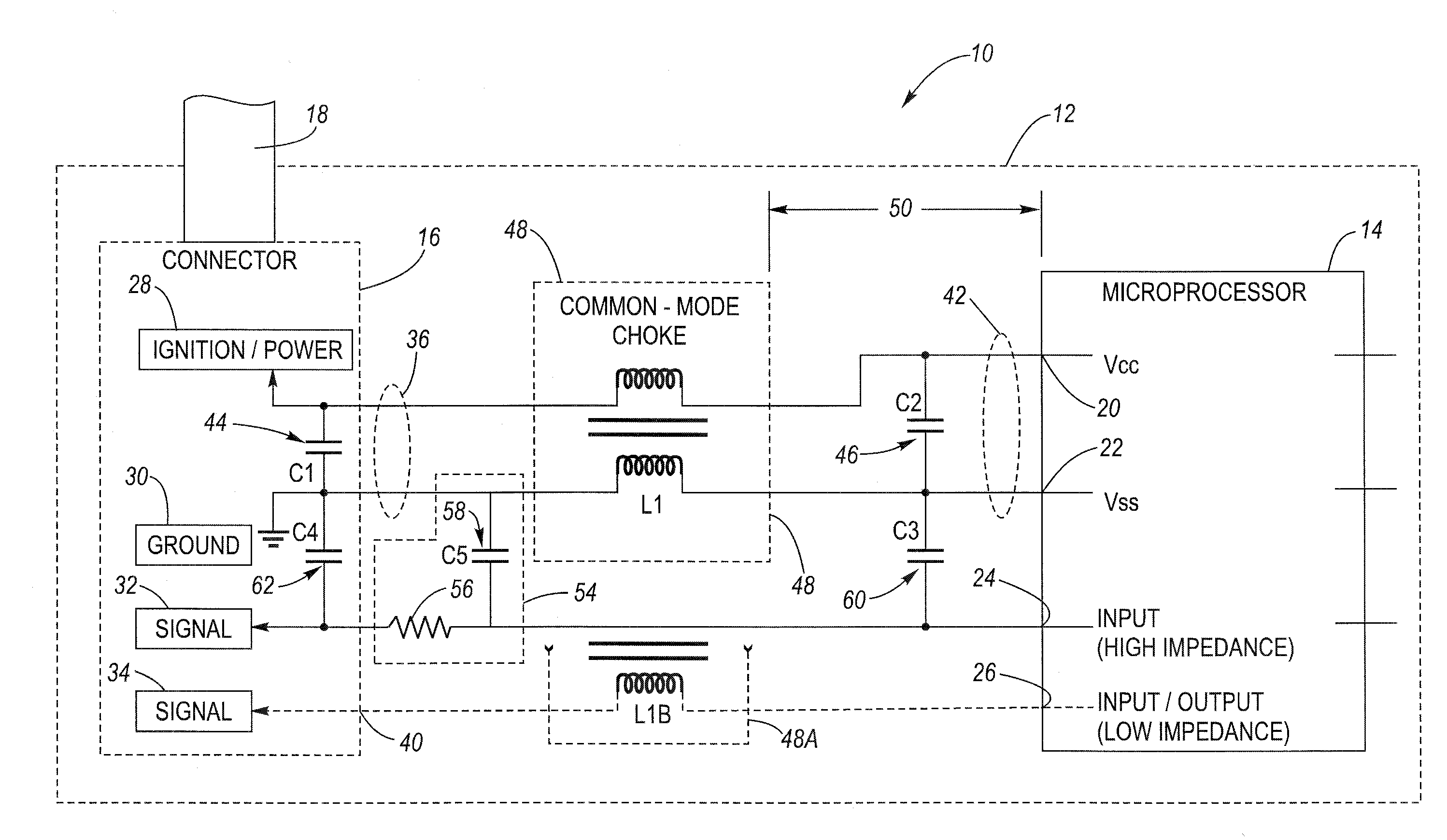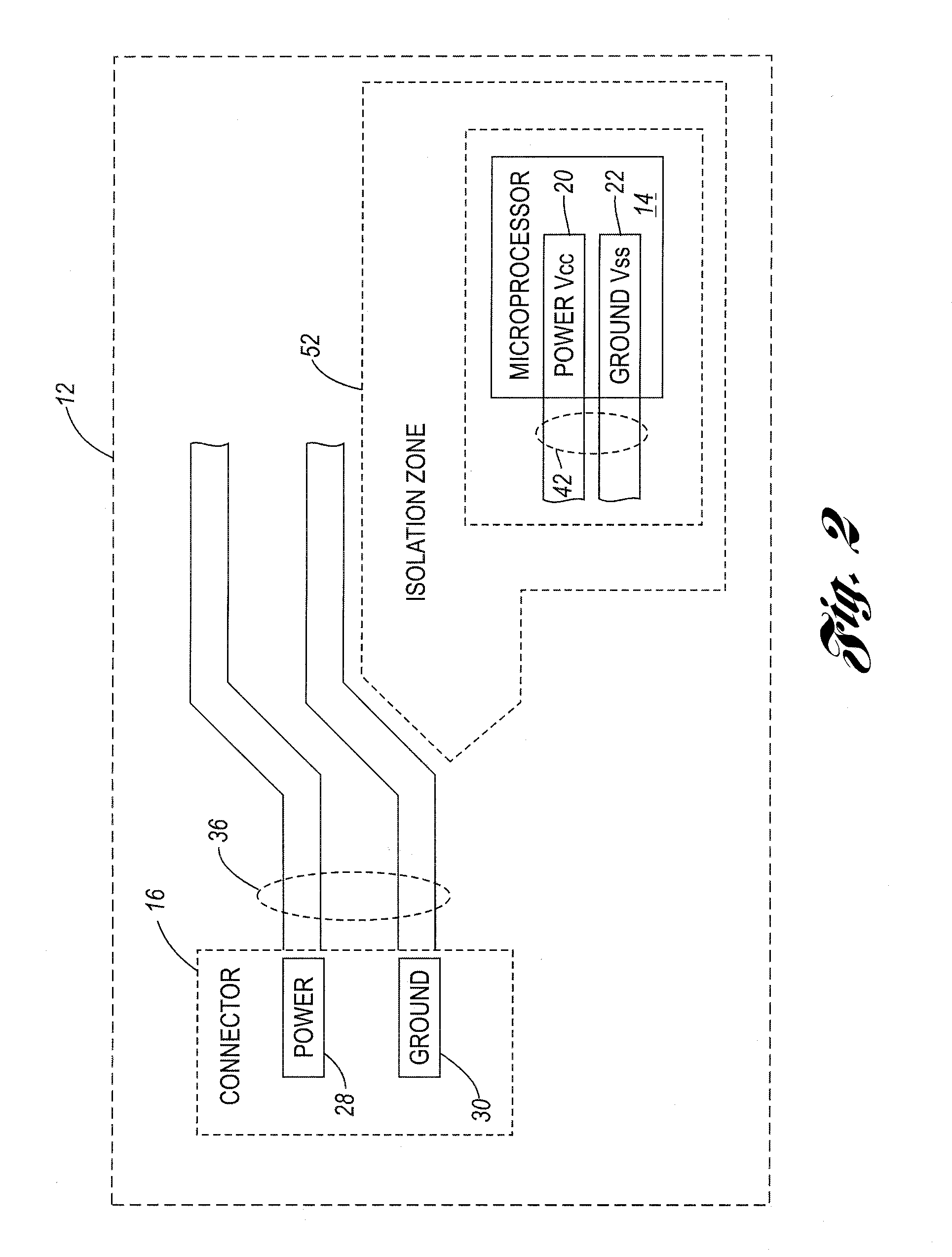Microprocessor common-mode emissions reduction circuit
- Summary
- Abstract
- Description
- Claims
- Application Information
AI Technical Summary
Benefits of technology
Problems solved by technology
Method used
Image
Examples
Embodiment Construction
[0014]Referring now to the drawings, wherein like reference numerals are used to identify identical components in the various views, FIG. 1 is a schematic and block diagram of an electronic apparatus 10 including common-mode (CM) RF emissions reduction features according to the present invention. Apparatus 10 includes a main circuit board 12 on which is disposed an integrated circuit having electrical switching characteristics, such as a microprocessor 14, that is susceptible to producing CM RF currents, and hence CM RF emissions. FIG. 1 additionally shows circuit board 12 having a connector 16 located thereon configured for connection to an external wire harness 18 or the like. As described above, the present invention is directed to minimizing or eliminating RFI by addressing a principal source of such emissions, namely, microprocessor RF emissions. As to microprocessor RF emissions, the primary source involves common-mode (CM) RF currents. As one example, such CM RF currents occu...
PUM
 Login to View More
Login to View More Abstract
Description
Claims
Application Information
 Login to View More
Login to View More - R&D
- Intellectual Property
- Life Sciences
- Materials
- Tech Scout
- Unparalleled Data Quality
- Higher Quality Content
- 60% Fewer Hallucinations
Browse by: Latest US Patents, China's latest patents, Technical Efficacy Thesaurus, Application Domain, Technology Topic, Popular Technical Reports.
© 2025 PatSnap. All rights reserved.Legal|Privacy policy|Modern Slavery Act Transparency Statement|Sitemap|About US| Contact US: help@patsnap.com



